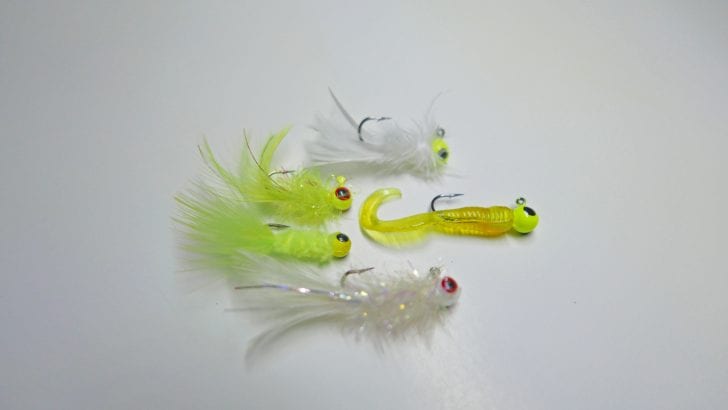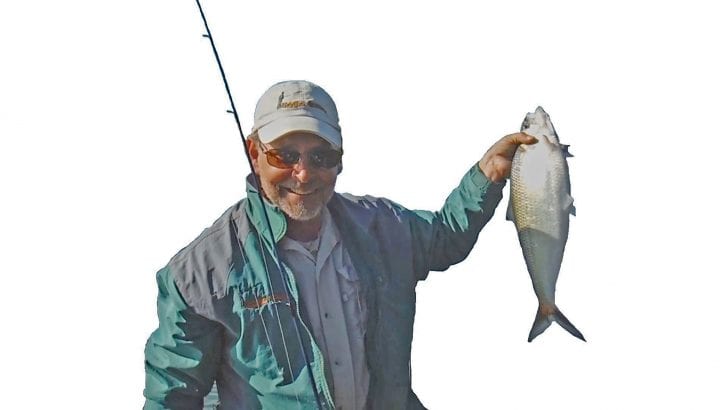February can be slow when it comes to inshore fishing in the Lowcountry. Being one of our coldest months, a lot of anglers refrain from outdoor activities, especially standing in front of a large body of water with a cold, cold wind sending chills down your spine while trying to catch some Winter fish.
But, for the angler that is still looking for some Winter action, there is an Atlantic fish that you could target through February into early March. That is the American Shad. That’s right, I said Shad.
During this fish’s migrating period, the American Shad will head up river, and a popular location where they could be targeted this time of year is in the Tailrace Canal.
The angler would need access to a boat to target these fish as they will gather in large numbers up river and circling in front of the dam.
Don’t let this fish fool you. It is a strong fighter.
Don’t let this fish fool you. It is a strong fighter. They can weigh as high as 6 pounds, and when fighting one, leave a smile on your face that could last a lifetime.
So, what would you need to target these fish besides access to a small boat?
Rod and reel combinations from the light to ultra light category work fantastic, using line strengths from 2- to 4- to 6-pound test.
This will still be plenty to land the fish and light enough to have a great time.
The lures needed to target these fish are simple—nothing much different than you would use for Crappie, freshwater Trout and Bluegill—small chartreuse curly tail grubs that will fit a 1/16 ounce or under chartreuse or white jig head.
The angler may also use jig heads that have been pre-tied and wrapped with a Chenille body with chicken feather tails, either in chartreuse or white.
The key to attracting Shad is not only location but presentation
These style jig heads have been quite successful for me in the past.
The key to attracting Shad is not only location but presentation of these baits. Rigging these baits on your rod is quite simple.
The most common method is to tie directly to one single jig head. Others use an over-under style, tying to one jig and leaving approximately an 18-inch length of line from the first jig then tying that to a second jig.
This allows the angler to cast two lures at the same time. I myself prefer tying to just one single jig head.
You will find most anglers will anchor their boats just off the riverbank.
They will cast out from the boat into the current and then slowly retrieve their line adding a twitch or jigging the bait every now and then until it is completely retrieved.
I will try to help explain this technique in more detail so you will understand the proper presentation to attract these fish.
After anchoring the boat near the bank, look out and investigate which direction the current is moving.
If the current is flowing from right to left, then you would take your lure and cast out to the right into the current. After the lure hits the water, close your bail, but do not reel in your line.
Allow your lure to slowly sink and move with the current. The timing of this will depend on the depth of water you are fishing in.
I usually find myself using a countdown in my head once the lure hits the water
If the water is shallow, do not allow the lure to fall for too long or you may become snagged on the bottom.
I usually find myself using a countdown in my head once the lure hits the water, whispering to myself 1, 1,000, 2, 1,000, 3, 1,000, and so on, timing the lure’s drop, then I reel in my slack and slowly retrieve the lure at the same time allowing the current to bring it to the top.
Once the lure comes to the top of the water, I usually have enough time to open my bail and let line out, allowing the lure to fall again, counting down with the same method, then retrieving my line in and starting the whole procedure over again.
You will find in most cases that the Shad like to hit during the drop of the lure, lower in the water, and not towards the surface.
My favorite technique is to anchor the boat between 30 to 50 yards off the bank, putting myself right in the current. This will allow me to cast with the current.
As I cast out into the current, usually off of the back of the boat, I wait for my lure to hit the water. Once my lure hits the water, I put my hand on my spool, but I do not close the bail.
I let line out with the current allowing my jig to fall and move away from the boat further, then I will close the bail after I have timed my drop and slowly jig and retrieve my lure back to the top of the water.
Once my lure has reached the top of the water, I do not recast, I open my bail again and allow my line to move out and my lure to sink again.
I can continue this technique while anchored in this position for a long time without having to recast, and in most cases, I only recast after I have successfully landed a fish, and boy, can it be fun!
So, I hope if you find yourself bored and are seeking some fishing fun during one of our coldest months, maybe you will allow the Shad to take away some of the sad during the slow Winter months.
Like I always say, good luck out there and have fun fishing! To view some fishing adventures, go to my YouTube Channel “Fishing with Jiggin Jerry” or www.jigginjerry.net.
You may also enjoy reading Artificial Shrimp And Winter Specks




